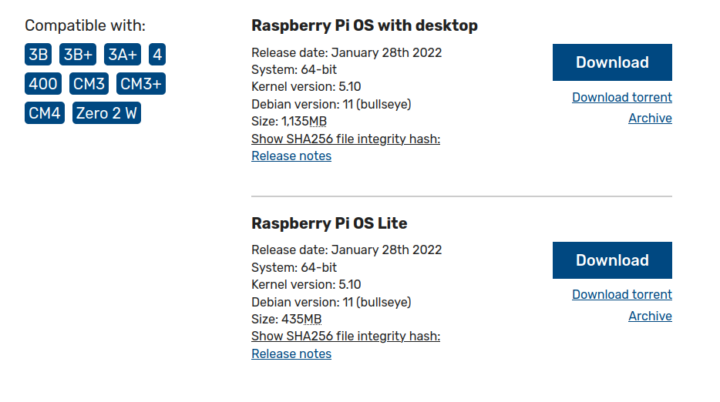The Raspberry Pi Foundation has now officially released Raspberry Pi OS 64-bit about two years after the first beta version was released.
Despite some potential performance benefits from using 64-bit code instead of 32-bit, the Raspberry Pi Foundation has resisted moving too quickly to a 64-bit OS because if it would create two separate worlds for their earlier 32-bit boards like Raspberry Pi 2 or Raspberry Pi Zero, and the newer 64-bit boards starting with Raspberry Pi 3 onwards and may confuse users besides the extra workloads.
Some of the main reasons to finally release a 64-bit version include improved software compatibility with many closed-source applications only available for arm64, and some open-source ones not fully optimized for the armhf port, some performance benefits, and the ability for a process to make use of the full 8GB RAM, removing the 3GB limit when using LPAE (Large Physical Address Extension) on 32-bit operating systems.
When I tested Raspberry Pi OS 64-bit on Raspberry Pi 4 in June 2020 I actually noted some performance regressions against Raspberry Pi 32-bit OS, and at the time there were some known issues such as the lack of hardware video decoding in VLC and Chromium. But with the first stable release, video acceleration works through Chromium and VLC, GPU acceleration works through Mesa, and hopefully, some of the performance regressions are resolved, so it can perform more or less as well, or in some cases better, than the 32-bit version.
There’s however one issue with using the 64-bit version of Chromium installed by default: the WidevineCDM library is not available making it impossible to play streaming video from premium services such as Netflix or Disney+. If that’s a must you can install the 32-bit version of Chromium instead::
|
1 |
sudo apt install chromium-browser:armhf libwidevinecdm0 |
Run the following command to reinstall the 64-bit version
|
1 |
sudo apt install chromium-browser:arm64 libwidevinecdm0 |
While in theory, Raspberry Pi 64-bit OS can be installed on any 64-bit board, the desktop version may not work very well on Raspberry Pi Zero 2 W due to the low 512MB RAM capacity, so you may be better off with the 32-bit OS in that case. The Lite version of the 64-bit OS should work fine even with 512MB RAM.
You may find more insights in the official announcement, and get the latest 64-bit OS from the Download page.

Jean-Luc started CNX Software in 2010 as a part-time endeavor, before quitting his job as a software engineering manager, and starting to write daily news, and reviews full time later in 2011.
Support CNX Software! Donate via cryptocurrencies, become a Patron on Patreon, or purchase goods on Amazon or Aliexpress





